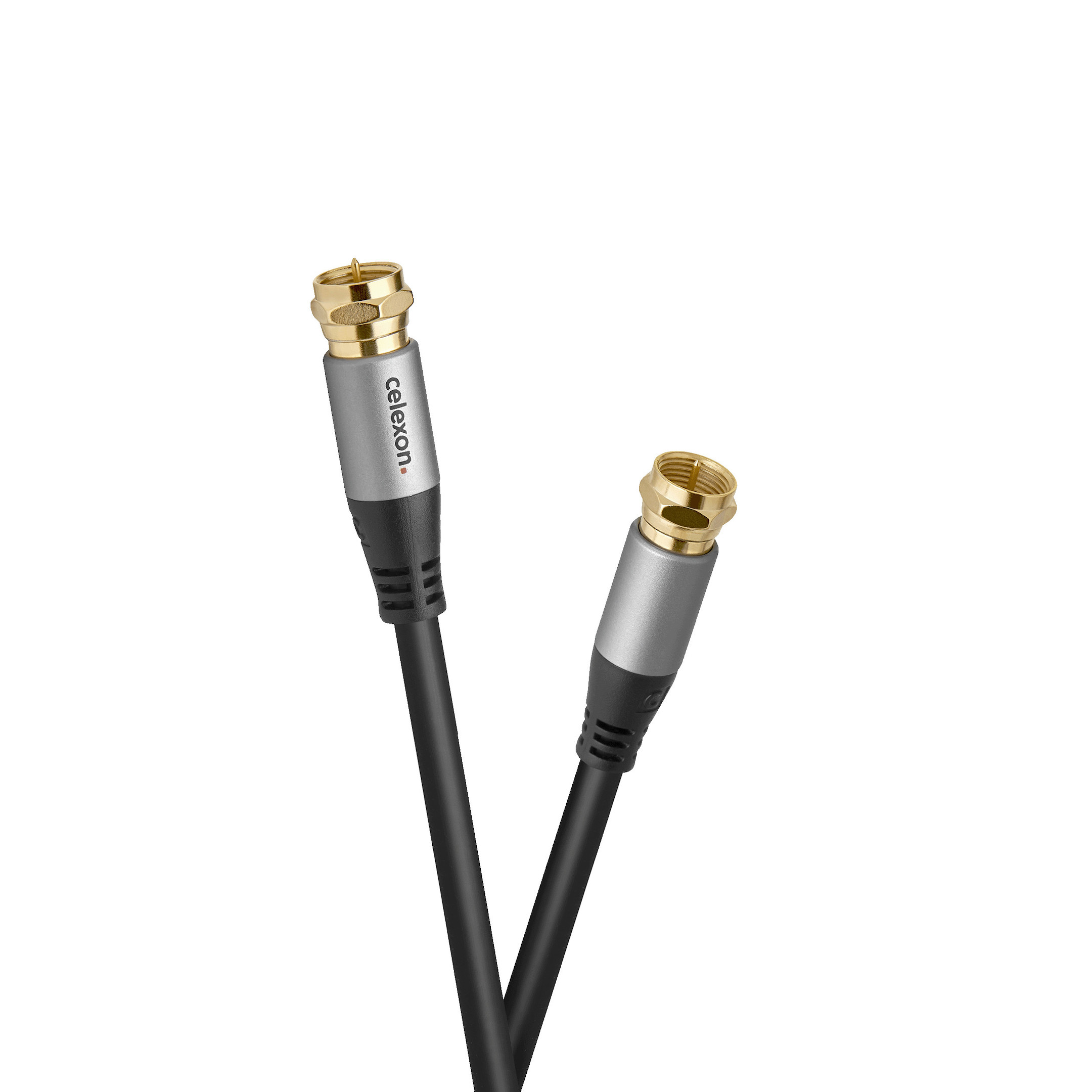























£7.99*


Product information
The celexon F-plug satellite antenna cable is the ideal companion when it comes to connecting devices with a coaxial F-plug connection, such as TV sets, hi-fi systems, radios or the satellite receiver, to the satellite dish.
The power cables that often run parallel to the antenna cable, as well as mobile phones in the vicinity, can have a considerable negative influence on the transmission of picture and sound signals. Thanks to the high shielding of the antenna cable, the electromagnetic interference signals are shielded from the inner conductor. Optimum transmission of the picture and sound signal is ensured with this cable.
When laying antenna cables, you should also always make sure that no kinks get into the cable, as these increase the attenuation in the cable and the overall quality suffers as a result.
The Professional Line antenna cables are double shielded and, thanks to their gold-plated contacts, guarantee high corrosion resistance and reliable transmission performance.
celexon's Professional Line combines technically reliable functionality and flawless workmanship with elegant design.
Whether you use our cables for office (home office), entertainment or professional use, you will be perfectly connected in all areas.
KEY INFORMATION
- Coax F-plug (Sat) to coax F-plug (Sat)
- Transmission: digital and analogue signals (DVB-S/ DVB-S2, DAB/ DAB+, FM)
- Connector: gold-plated contacts, chrome-plated aluminium housing, flexible bend protection
- Cable: high-purity copper conductors, 2-fold shielding, PVC sheath with 5.5 mm diameter, 75Ω characteristic impedance, > 85 dB attenuation
- Cable colour: black
- Cable type: round
- Cable length: 5.0m
- REACH, RoHs compliant
IN THE BOX
1x celexon F-plug satellite antenna cable 5.0m - Professional Line
Technical data
| Name | celexon F-plug satellite antenna cable 5m - Professional Line |
|---|---|
| Article number | 1000015579 |
| GTIN/EAN | 4260094743528 |
| Manufacturer SKU | 1000015579 |
| Model name | 1000015579 |
| Brand | celexon |
| Product Type | Cable |
| Product Series | celexon TV Sat Professional Line |
| Inputs | 1x F-plug SAT |
| Outputs | 1x F-Stecker SAT |
| Cable length | 5 m |
| Product width | 1.2 cm |
| Product height | 1.2 cm |
| Product depth | 500 cm |
| Weight | 0.198 kg |
| Colour | Black |
| Condition | New |
| Warranty | 24 Month |
| Warranty type | Bringin service Service and support information |
Product safety
| Person responsible for the EU |
|---|
| celexon Europe GmbH |
| Gutenbergstraße 2 |
| 48282 Emsdetten |
| Germany |
| info@celexon.de |



